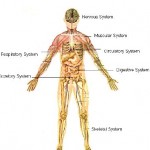The Body of Christ Metaphor: Ephesians

As I explained in the “Introduction” of this series, I am stepping through the passages in the New Testament in which the authors (primarily Paul – perhaps only Paul) use the term “body” in a metaphorical sense. As I read through these passages, I’m going to be asking these kinds of questions: What is Paul comparing to a “body”? What comparison is he making? At what point does it seem the comparison ends? How is this usage similar to or different from other usages?
Now, the term “body” is found often in Scripture. It usually refers to an actual body… that is, a person physical body. But, there are a few times when the term “body” does not refer to a person’s physical body, but is used in a metaphorical sense. I’ve already discussed the usages of “body” in Romans 12:4-5, 1 Corinthians 10-11, and 1 Corinthians 12, and in this post I’ll look at the uses of the term body in Ephesians.
Many of the metaphorical occurrences of the term “body” in Ephesians are one liners, with very little explanation. However, even these one-liners tell us something important about Paul’s use of the term “body” in this letter:
And he put all things under his feet and gave him as head over all things to the church, which is his body, the fullness of him who fills all in all. (Ephesians 1:22-23 ESV)
This mystery is that the Gentiles are fellow heirs, members of the same body, and partakers of the promise in Christ Jesus through the gospel. (Ephesians 3:6 ESV)
There is one body and one Spirit – just as you were called to the one hope that belongs to your call… (Ephesians 4:4 ESV)
For the husband is the head of the wife even as Christ is the head of the church, his body, and is himself its Savior. (Ephesians 5:23 ESV)
For no one ever hated his own flesh, but nourishes and cherishes it, just as Christ does the church, because we are members of his body. (Ephesians 5:29-30 ESV)
In these passages, while we continue to see the community / corporate unity of believers in the metaphorical use of “body,” a few new aspects of the term are found in this metaphor: 1) Christ is represented as the “head” of the “body” in this letter, and 2) the “body” is specifically identified with “the church.”
These two new aspects are also found in the longer passage in Ephesians 4 in which Paul examines this metaphor in more detail:
And he gave the apostles, the prophets, the evangelists, the pastors and teachers, to equip the saints for the work of ministry, for building up the body of Christ, until we all attain to the unity of the faith and of the knowledge of the Son of God, to mature manhood, to the measure of the stature of the fullness of Christ, so that we may no longer be children, tossed to and fro by the waves and carried about by every wind of doctrine, by human cunning, by craftiness in deceitful schemes. Rather, speaking the truth in love, we are to grow up in every way into him who is the head, into Christ, from whom the whole body, joined and held together by every joint with which it is equipped, when each part is working properly, makes the body grow so that it builds itself up in love. (Ephesians 4:11-16 ESV)
In this passage, Paul ties together the concept of Jesus as “head of the body” with the relationships and interactions of the various members of the “body.” There remains a focus on the community / corporate unity that we’ve seen before, and there remains a focus on the interrelations between the various parts of the body, here illustrated as holding one another together as well as helping one another grow.
However, in this passage, with the addition of the “head of the body” to the metaphor, Paul explains that the individual members are able to hold together and help one another grow specifically because Jesus Christ is the head of the body. This new focus explains the need for an addition to the usual “body” metaphor. This does not mean that neither the Romans nor the Corinthians were able to interact with one another apart from Christ. It means that Paul desired to stress that relationship in this letter, and, thus, he added to his usual “body” metaphor.
(The “head” part of the metaphor is very important in this letter as a contrast to all other “rule and authority and power and dominion,” which is also a focus in this letter. For example, see Ephesians 1:21, Ephesians 2:1-2, Ephesians 3:10, and Ephesians 6:12.)
Interestingly, given the connection with Jesus Christ as “head,” Paul is able to say that (removing other modifiers to get to the basic sentence structure), “The body makes/does the growth of the body (causes the body to grow).”
So, while Paul still uses the “body” metaphor in Ephesians to indicate how individuals should relate to one another as a community, he also adds in the “head of the body” metaphor to point to Jesus Christ as source and ruler of the community. These two aspects together (the body working from the head) causes the community to grow together.
———————————

Now you’ve got me scratching my head. A physical body does not normally add or remove members. Or have them added or removed. It grows by strengthening the members it was born with. Maybe Predestination is right.
Is a metaphor like an analogy? or a parable?
An analogy can be carried too far to hold up.
If a parable is like a parabola, the two sides seem to be parallel but they are always diverging.